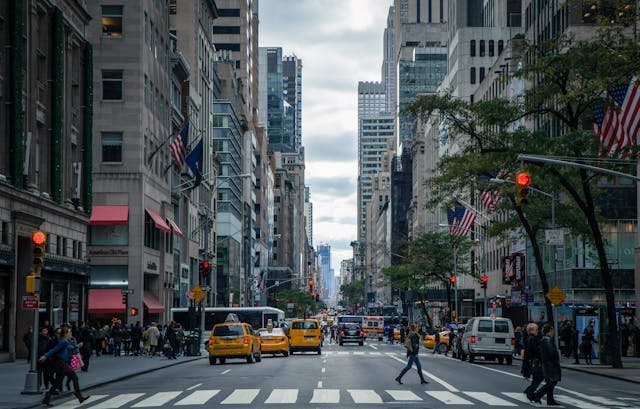The Future of Urban Living: How Cities Are Adapting to Changing Needs
Urban living is evolving at an unprecedented pace. As the world’s population continues to grow and environmental challenges become more pressing, cities must adapt to meet the changing needs of their inhabitants. From technology integration to sustainability efforts, cities around the globe are reimagining how urban spaces function and serve the people who live there.
In this article, we’ll explore how cities are adapting to these changes, focusing on key trends like smart cities, sustainable architecture, and the shift in living preferences, and how these transformations will shape the future of urban living.

Smart Cities: Technology Meets Urban Life
Harnessing Technology for Greater Efficiency and Connectivity
One of the most exciting developments in urban living is the rise of smart cities. These cities use technology to enhance the quality of life for residents, making urban spaces more efficient, sustainable, and connected. Here’s how:
- IoT Integration: The Internet of Things (IoT) connects everyday objects to the internet, allowing cities to gather real-time data and respond to it. From traffic management systems to smart streetlights that adjust based on real-time data, IoT is helping reduce energy consumption, improve public services, and enhance urban safety.
- AI and Big Data: Cities are increasingly using artificial intelligence (AI) and big data to predict trends and optimize services. For example, AI algorithms can analyze traffic patterns to reduce congestion or help city planners forecast the need for new infrastructure. Big data is also used for resource management, such as optimizing water usage or energy consumption.
- Urban Mobility: Smart cities are also embracing innovative transportation solutions, such as autonomous vehicles, shared bikes, electric scooters, and ride-hailing services, to improve urban mobility. These technologies reduce traffic, lower emissions, and offer more convenient and affordable travel options.
- Connectivity and Access: High-speed internet and 5G networks are transforming how residents interact with their cities, providing access to government services, healthcare, and education, all from the comfort of their homes or mobile devices.
Smart cities hold the potential to create more responsive, sustainable, and livable urban spaces, offering a glimpse into how technology can improve everyday life.
Sustainable Architecture: Green Buildings for a Healthier Future
Designing Cities with the Planet in Mind
Sustainability is a central theme in the future of urban living. With concerns over climate change and resource depletion, cities are prioritizing eco-friendly design and construction practices to reduce their environmental impact. This shift is seen in:
- Green Buildings: More cities are investing in sustainable architecture, with buildings designed to minimize energy consumption and reduce their carbon footprint. Green buildings incorporate features like energy-efficient insulation, solar panels, rainwater harvesting, and natural ventilation. These buildings use fewer resources, improve indoor air quality, and promote long-term sustainability.
- Vertical Gardens and Green Spaces: Urban green spaces, such as parks, gardens, and green rooftops, are being incorporated into the design of buildings and neighborhoods. These green areas help combat urban heat islands, provide recreational spaces for residents, and support biodiversity.
- Renewable Energy Integration: Solar power, wind energy, and other renewable sources are becoming integral to urban infrastructure. Many cities are incorporating these technologies into public buildings, residential complexes, and even entire neighborhoods, reducing reliance on fossil fuels and lowering overall emissions.
- Waste and Water Management: Sustainable cities are also rethinking how they handle waste and water. Composting programs, recycling initiatives, and water-efficient systems help reduce waste and conserve precious resources. Some cities even utilize wastewater treatment plants that convert sewage into energy, reducing their ecological impact.
Sustainable architecture and urban planning are key to creating cities that support both people and the environment, ensuring that future generations can thrive in healthy, green spaces.
Mixed-Use Development: Living, Working, and Playing in One Space
The Rise of Multi-Purpose Urban Spaces
As cities grow and populations become more concentrated, there’s a growing demand for spaces that serve multiple functions. Mixed-use developments—where residential, commercial, and recreational spaces coexist—are becoming more common. These developments have several benefits:
- Reduced Commute Times: With residential, office, and entertainment spaces located in close proximity, residents can reduce their reliance on cars, cutting down on traffic congestion and pollution. This leads to a more sustainable and less stressful urban lifestyle.
- Walkable Communities: Mixed-use developments promote walkability, which not only makes it easier for residents to access amenities, but also encourages a healthier lifestyle. Walking or cycling to work, schools, and shops can improve overall well-being and reduce the environmental impact of car-dependent cities.
- Vibrant, Diverse Communities: These developments often foster a sense of community by combining different types of people in one space. Retailers, workers, and families all live side by side, encouraging interaction and creating a dynamic urban environment. This mix can also attract a wide range of businesses and amenities, making neighborhoods more resilient to economic shifts.
- Affordable Housing: Some mixed-use projects include affordable housing units alongside market-rate residences, helping address the growing need for affordable housing in cities. These developments can provide solutions to housing shortages while promoting diversity.
Mixed-use spaces offer a vision of the future where urban living is convenient, diverse, and environmentally sustainable.
The Shift to Suburban and Rural Living
The Changing Preferences of Urban Dwellers
In recent years, there has been a notable shift in where people want to live. While cities have long been the focal point of economic opportunity, education, and culture, the COVID-19 pandemic and advancements in remote work have changed how many view urban living. People are increasingly seeking out suburban and even rural areas for a variety of reasons:
- Remote Work: The rise of telecommuting has made it easier for people to live farther from city centers without sacrificing their careers. Many workers are moving to quieter, less expensive areas where they can enjoy more space and a better quality of life.
- Affordability: Rising property prices in major cities have pushed people to consider more affordable alternatives in suburban or rural areas. These locations often offer larger homes, more green space, and a slower pace of life.
- Quality of Life: Many people are seeking areas that offer a better quality of life, with less noise, pollution, and congestion. Smaller towns and suburbs are increasingly attractive because they offer a balance between urban amenities and natural surroundings.
- Decentralization: The shift to remote work is contributing to the decentralization of major urban hubs. Cities no longer need to be the only centers of economic activity, as businesses can operate remotely or in hybrid models, spreading economic opportunities to less densely populated areas.

The Future of Urban Living: What’s Next?
A Vision for Tomorrow’s Cities
As we look to the future, cities will continue to evolve, guided by the principles of sustainability, inclusivity, and technological advancement. Key trends likely to shape urban living include:
- Increased Use of AI and Automation: From self-driving cars to automated delivery systems, cities will rely more heavily on artificial intelligence and automation to improve urban life. These technologies will make cities safer, more efficient, and more responsive to residents’ needs.
- Circular Economy: Cities are moving toward a circular economy, where waste is minimized, and products are reused or recycled. This model will drive urban planning, waste management, and the design of sustainable goods.
- Resilience to Climate Change: As cities face the effects of climate change, they will be built to adapt. This may include flood-resistant infrastructure, green roofs to combat heat islands, and improved disaster response systems to protect residents.
- Enhanced Social Inclusion: Cities will continue to prioritize inclusivity, ensuring that urban spaces are accessible to everyone, regardless of income, background, or ability. Mixed-use developments and affordable housing initiatives will support diverse, vibrant communities.
Conclusion: Adapting to a Changing World
The future of urban living is one of transformation and innovation. As cities embrace new technologies, sustainable practices, and changing lifestyle preferences, urban spaces will become more connected, efficient, and livable. Whether through the rise of smart cities, the expansion of green architecture, or the shift toward mixed-use developments, the cities of tomorrow will be shaped by the needs and aspirations of their residents.
As we move into the future, it’s clear that urban living is no longer just about surviving in a crowded metropolis—it’s about thriving in a connected, sustainable, and inclusive environment. The future of urban living is bright, and it will continue to evolve in exciting ways.












